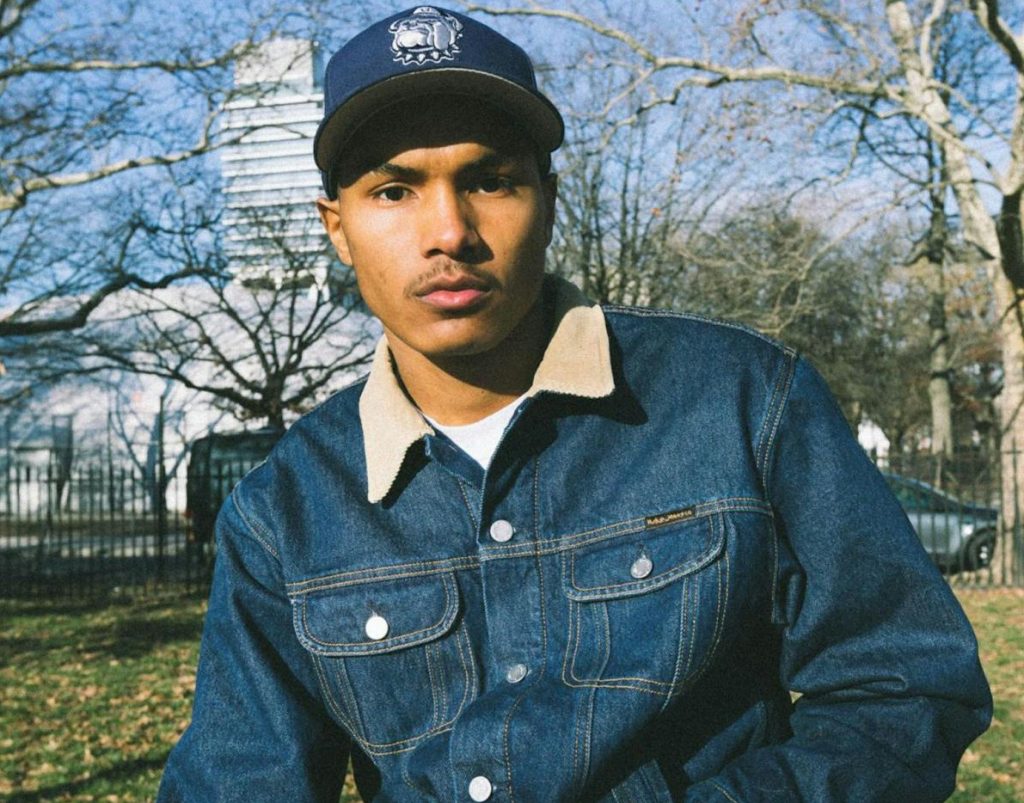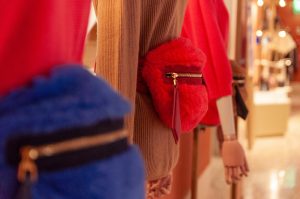The intersection of harsh winter conditions and a rich Nordic fashion heritage has spurred the Nordic Fashion Association to lead sustainable initiatives, aiming to elevate the region’s fashion industry through collaboration and innovation.

Image Source: Nudie Jeans
Norway experiences harsh winter, owing to its geography. This demands a wide variety of apparel and accessories to withstand the harsh winter. Despite these challenges, the Nordic fashion and textile industry shares a unique design heritage and craftsmanship tradition, which holds potential for competitive advantages and economic growth. This gave rise to the launch of the Nordic Fashion Association whose core purpose is to gather the key players in the Nordic fashion industry and collectively embark on the process of working with, and implementing principles for, sustainable fashion.
Realiszing the benefits of pooled resources and based on the accumulated experiences, the association is committed to unifying the Nordic fashion industry beyond a sole focus on sustainability to include collaborative export initiatives, joint international positioning and new business models.
New partners dedicated to accelerate the Nordic fashion industry include Sustainable Fashion Academy, Norwegian Fashion Institute, Finatex, TEKO Sweden and Swedish Trade Federation. Nordic Fashion Association also aims to define a number of strongholds and objectives to inspire a new vision for the Nordic fashion industry and the Nordic region.
The clothing design market in Norway is a dynamic blend of traditional craftsmanship, contemporary aesthetics, and a growing emphasis on sustainability. Norwegian fashion designers are celebrated for their unique ability to merge practicality with artistic expression, often drawing inspiration from the country’s rich cultural heritage and natural landscapes.
Let’s take a look at some of the key trends that have emerged on the Norway fashion landscape:
Norway Fashion Trends 2024
Norwegian capital Oslo has experienced major changes on the fashion landscape, from the regeneration of rundown docklands to a cutting-edge shopping district with the first Dior boutique in Scandinavia and iconic department store Steen And Strom. Let’s take a look at some of the key fashion trends that have developed in recent times.
Sustainable Fashion
Per The Nordic Page, “‘Norway is among world’s top ten most sustainable fashion-conscious countries.’”
The Nordic Fashion Association’s Sustainable Fashion Summit discuss new ways to reduce waste and create sustainable business practices. It also showcased a convergence of technology and sustainability, highlighting innovations from Grindr-enhanced jeans to biodegradable clothing, underscoring a transformative shift towards circular fashion systems and responsible consumption practices.
Nordic Initiative, Clean and Ethical- a project launched by the Nordic Fashion Association in 2009- focuses on sustainable fashion and works towards developing a strong Nordic fashion organisation devoted to competence building and global positioning.
Many fashion and lifestyle brands in the region have adopted ethical practices. Norwegian fashion brand Whitespace by Simen Staalnacke and Leif Rune Loen retails seasonless and genderless puffer coats made from one hundred percent recycled plastic bottles and industrial waste. Dear Denier combines design with sustainable materials such as recycled nylon, recycled elastane, recycled wool and traceable natural fibres. And, lifestyle brand 1 People offers pieces crafted by small family-run manufacturers using lower-impact and certified materials.

Image Source: WhiteSpace
Knitwear
Considering the harsh winters, knitwear is big. Sorgenfri, a knitwear brand, is a popular choice in the local community. Per Forbes, ‘The family-owned company, based near Bergen, was founded in 1992 as a reaction to other textile factories in Norway outsourcing their production abroad. With all production carried out in their own factory, they are highly dedicated to technical innovative production and luxurious handmade details.’
Traditional Norwegian sweaters with detailed patterns, named lusekofte, are a stylish local trend and fashion designers continually create modern versions of the classic to keep people warm and fashionable in the cold months. Minimalist knits make it effortless to mix and match pieces to create a chic look. Nordic knitwear brand Le Pirol, for example, designs minimalist outerwear for a modern, sustainable lifestyle.
Chunky Boots And Bold Accessories
Comfortable footwear is a key trend. Chunky boots and stylish sneakers are trendy because they are practical for both city and outdoor activities. Boots with good insulation and waterproof features are especially favored in the colder months. Accessories are key in dressing up cold weather looks and one of the well-loved brands is Sandqvist, which offers stylish, everyday bags from backpacks to handbags. The brand uses organic cotton and recycled fabrics and is a member of the Fair Wear Foundation. Sandqvist even has its own workshop which repairs and up-cycles old bags into new products. Tom Wood is a popular Norwegian label which offers fine jewellery.
Local and Artisan Brands
Supporting local designers and artisans is important. Women in Norway like fashion brands that focus on quality and unique designs. This trend helps the local fashion industry and celebrates Norway’s cultural heritage. ‘As We Are Now’, a local brand popular for its comfort-first fashion based on circular principles, offers soft, breathable garments made from Tencel TM from Portugal and designed in Norway. Waste is minimal as the brand produces all the looks in small batches on order and creates only a few bestsellers in advance.

Image Source: As We Are Now
Athleisure and Comfort Wear
Comfortable clothes for both home and casual outings are trendy. Leggings, oversized sweaters, and relaxed-fit trousers are common choices. This athleisure trend emphasise comfort without sacrificing style. Fashion brand Nudie Jeans is a popular choice as it uses eco-friendly materials including GOTS certified cotton, limits chemicals and wastewater used in production and has also adopted the Fair Wear Foundation Code of Labor to ensure fair labor in its supply chain. Sustainable label Houdini is acclaimed for its use of a medium proportion of eco-friendly and recycled materials with outerwear spanning sizes 2XS-XL.
In 2024, Norwegian fashion is focusing on balancing style, practicality and sustainability. By shining the spotlight on eco-friendly practices and combining both classic and modern styles, Norway fashion offers a unique and chic way to dress for any occasion, be it date night or stay cozy in a winter storm.
Traditional Clothing in Norway
Bunad is a traditional piece of Norwegian fashion, characterised by its intricate designs, vibrant colors, and regional variations. These folk costumes are worn for special occasions such as weddings, confirmations, and national celebrations, embodying Norwegian cultural heritage. Each bunad is specific to a particular region or community, often featuring distinctive hand embroidery, patterns, and accessories that reflect local traditions and design history. The craftsmanship involved in making a bunad is highly respected, with many costumes passed down through generations or meticulously tailored to fit individuals, ensuring they remain cherished symbols of Norwegian identity and tradition.
Oslo Runway
Oslo Runway, launched in 2015, showcases the best of Norwegian fashion, art and culture, including emerging talent. Per Forbes, ‘Norwegian design schools Kunsthøgskolen, ESmod, Oslomet and Sofi School showcased their graduates in the DS Fashion Talent Awards, with Margaret Abeshu the winner this year. Part of the appeal of Oslo Runway is that every show is presented at a different venue, from the former Acne showroom, a historic department store to warehouses and The Plus, the world’s most sustainable furniture factory in the middle of a beautiful cedar forest…’

Jasmeen Dugal is Associate Editor at FashionABC, contributing her insights on fashion, technology, and sustainability. She brings with herself more than two decades of editorial experience, working for national newspapers and luxury magazines in India.
Jasmeen Dugal has worked with exchange4media as a senior writer contributing articles on the country’s advertising and marketing movements, and then with Condenast India as Net Editor where she helmed Vogue India’s official website in terms of design, layout and daily content. Besides this, she is also an entrepreneur running her own luxury portal, Explosivefashion, which highlights the latest in luxury fashion and hospitality.











